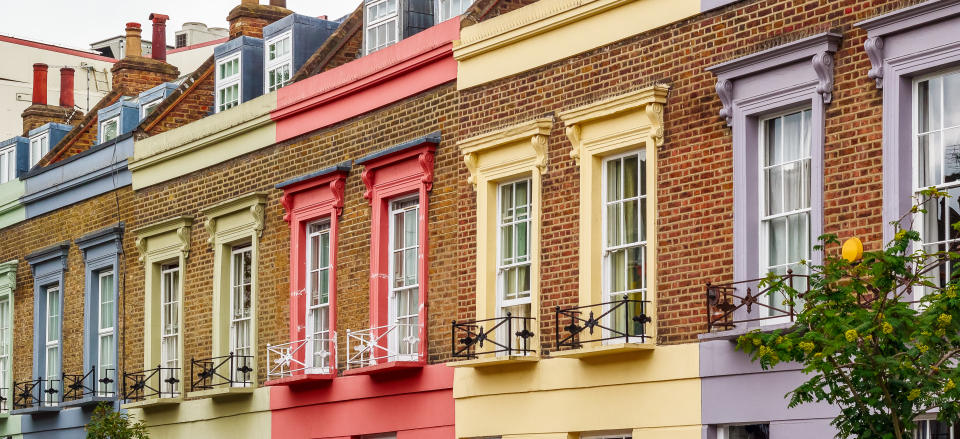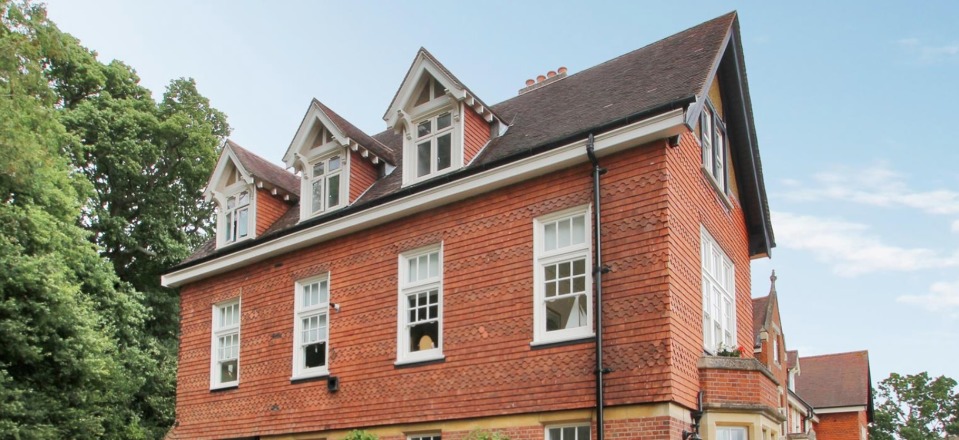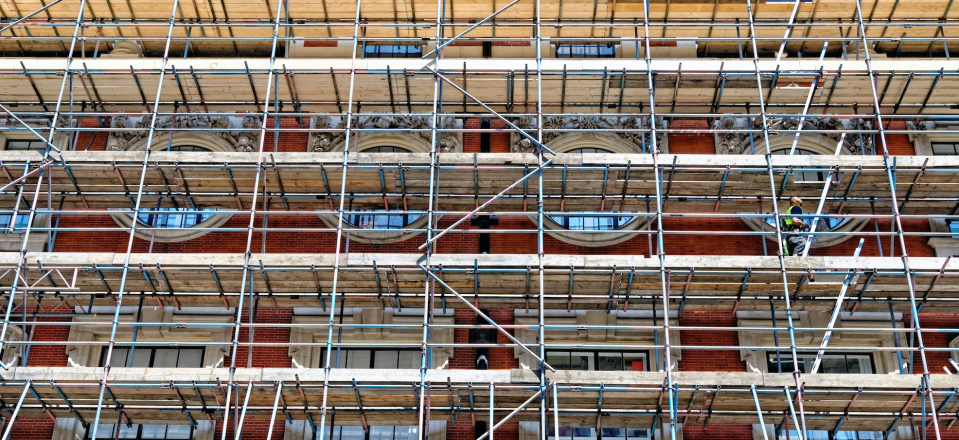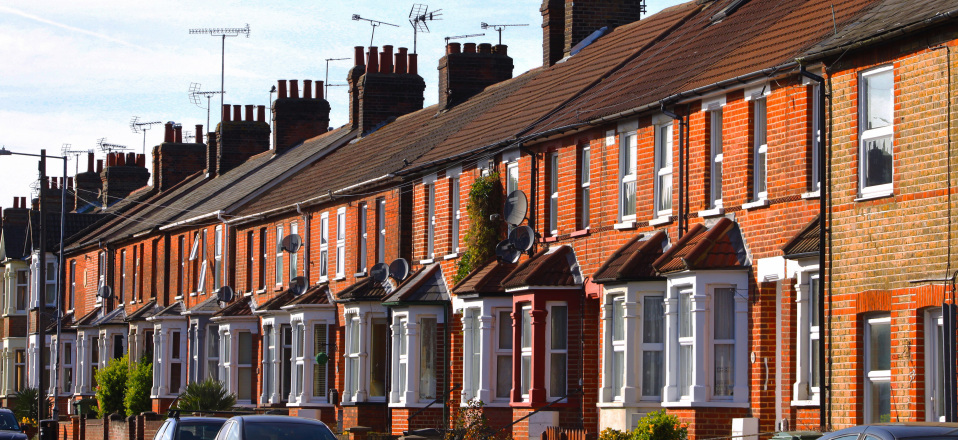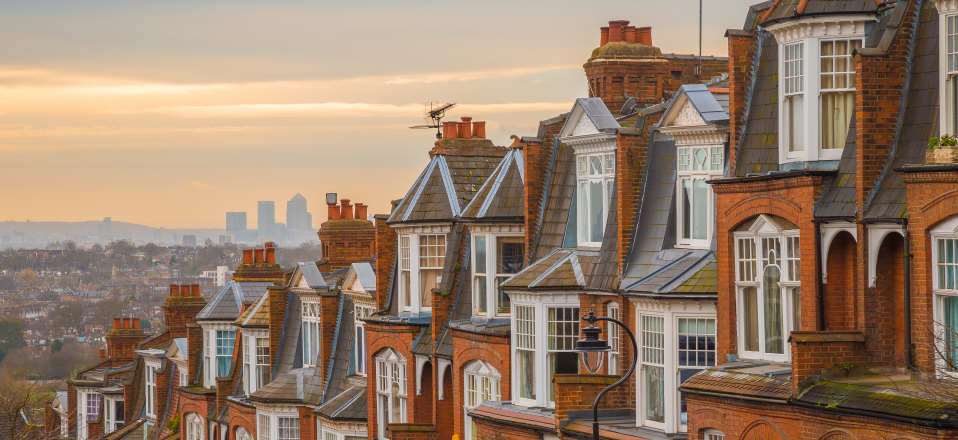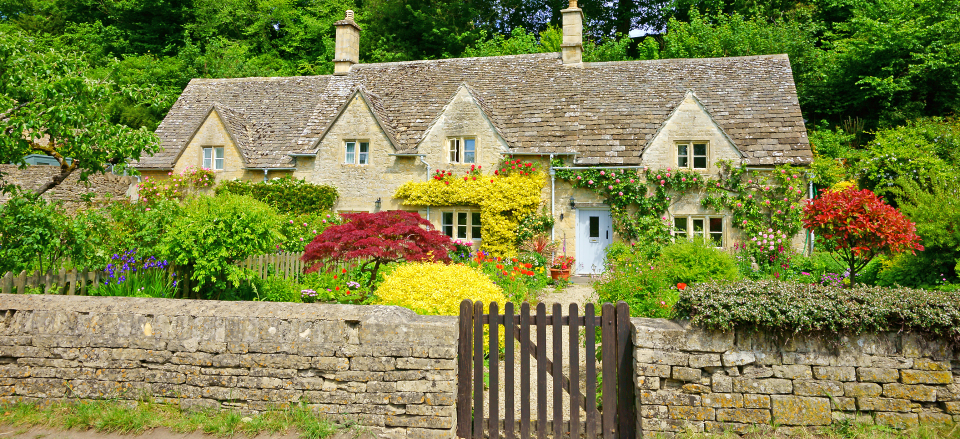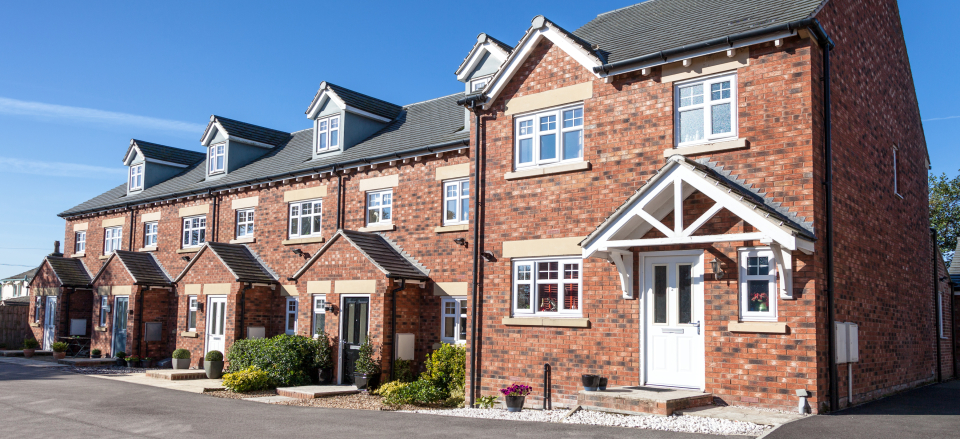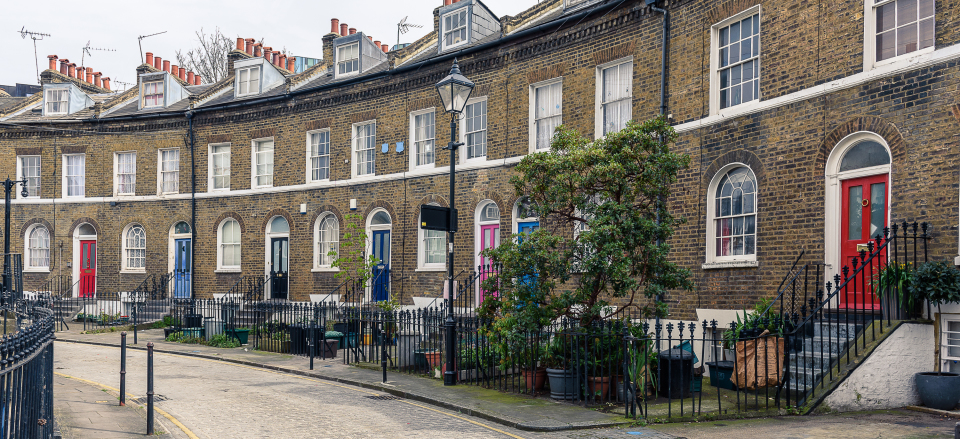Help to Buy equity loan scheme extended
The government has pushed back the qualification deadline to help buyers whose new homes have been delayed by coronavirus.
The government has extended the deadline for the Help to Buy initiative by two months.
Under the current scheme, which enables people to buy a new-build home, builders need to have finished construction by the end of December in order for buyers to qualify for the equity loan.
This deadline has now been extended until 28 February 2021, with the deadline for legal completion remaining unchanged at 31 March 2021.
The Help to Buy equity loan scheme enables people to purchase a new-build home with just a 5% deposit, with the government topping this up with a 20% loan that is interest-free for five years.
Housing minister Christopher Pincher said: “Today’s announcement will help provide certainty and assurance for Help to Buy customers whose new homes have been delayed due to coronavirus.”
Why is this happening?
The current version of the Help to Buy equity loan is due to be replaced by a new version of the scheme on 1 April 2021.
The changes, which include limiting it to first-time buyers, have been flagged up well in advance.
But thousands of families who had planned to use the scheme are understood to be at risk of not qualifying, as the home they were planning to buy may not be built in time due to the coronavirus pandemic.
The extension of the deadline should enable them to still use the scheme.
Who does it affect?
The Help to Buy equity loan scheme has helped 272,852 people buy their first home or trade up the property ladder since it was first launched in April 2013.
It has, however, been criticised for helping people on high incomes buy expensive homes.
The new version of the scheme will address these criticisms, limiting the initiative to first-time buyers only and imposing property price caps on the maximum value of homes that can be purchased through the scheme in different regions.
What’s the background?
The Help to Buy equity loan scheme is one of a number of initiatives to help people get onto the property ladder.
Other schemes include the Lifetime ISA, under which the government contributes up to £1,000 a year to savers aged under 40 who set aside £4,000 annually towards the purchase of a new home or retirement.
The First Homes scheme enables first-time buyers and key workers in England to buy a new-build home at a 30% discount.
First-time buyers have also benefited from a stamp duty exemption on homes costing up to £300,000, although the Chancellor recently announced a stamp duty holiday for all buyers on homes costing up to £500,000 until 31 March 2021.
Top three takeaways
- The government has extended the deadline for the Help to Buy initiative by two months
- Under the current scheme, homes would need to have finished being built by the end of December in order for buyers to qualify for the equity loan
- This deadline has now been extended until 28 February 2021, with the deadline for legal completion remaining unchanged at 31 March 2021
Q&A: what’s happening in the property market?
We catch up with Richard Donnell, director of research and insight at Zoopla, about the trends he has seen since the housing market reopened for business.
Q. Richard, it’s been more than two months since the housing market reopened in England. What trends are you seeing now?
A. We are still seeing demand that built up during lockdown coming back to the market in England - and this is showing up in sales figures, with the number of sales agreed now running significantly higher than early March.
There are also strong indications that some households used lockdown as a chance to reassess how, and where, they live. These people are now entering the housing market, listing their home for sale and looking for their next home.
Q. What about Scotland, Wales and Northern Ireland?
A. As these markets have opened up over the last month or so, we have seen similar trends emerge, with demand rising and sales starting to climb too.
Q. So activity in the market is back to ‘normal’?
A. Sales numbers have certainly bounced back, but to put this in context, the number of sales agreed between January and July this year are still 20% lower than the same period in 2019.
As a result, we expect overall transaction levels to be around 15% lower this year as a whole - a significant fall, but a much more modest decline than many were expecting back at the start of lockdown in March.
Q. What does this mean for prices?
A. The higher levels of activity in the market are a hallmark of the rise in demand we have seen as markets have opened up. But we are seeing very clearly that this demand is not being matched by supply across the UK.
What I mean by that is that the number of households deciding to put their home on the market is currently far outnumbered by the number of households hoping to buy.
This imbalance between demand and supply is actually putting upward pressure on prices at the moment, and as a result we have seen the headline rate of price growth for UK homes rise to 2.7% in June, up from 2.4% in May.
Q. Are all the regions seeing this trend too?
A. Broadly that is right, yes. But when we dig into our index and additional data at a more granular level, some differences emerge. For example, in some city markets the imbalance between demand and supply is varied, as shown in the chart below.
It is no coincidence that the cities to the right of this chart, including Sheffield, Liverpool and Manchester, where demand is outstripping supply the most, are the places where house price growth is currently the strongest.
Q. The demand in many cities seems strong from this data, but we are hearing a lot about people moving to more rural areas?
A. We have seen increased demand in areas adjacent to cities. There are some buyers who are considering such a move, especially if their commuting patterns are set to change and they don’t have to travel to the office every day.
However, we believe that this is a ‘one-off’ factor rather than a seismic shift. We can see that in many city markets the largest demand is for properties within the city limits, and as markets start to reopen, there will be some rebalancing back towards higher density areas within cities.
Q. What impact has the stamp duty announcement had?
A. As we examined in our stamp duty research earlier in the year, London and the South East were always set to benefit the most from any stamp duty holiday. That's because higher average prices mean that buyers in these regions can make the biggest savings.
Our data is showing that this is the case, with a notable 27% jump in demand from purchasers in the weeks since the announcement earlier this month.
Q. What’s the outlook for the rest of this year?
- We expect the annual rate of pricing to remain within the 2-3% band well into the fourth quarter, October to December, as the current demand in the market supports pricing.
The economic landscape, especially unemployment levels, will impact how pricing evolves into 2021.
Nearly half of first-time buyers opt for longer mortgage terms
With the average deposit as much as £42,361, many first-time buyers are choosing 30-year mortgages to boost affordability.
Nearly half of first-time buyers are opting for mortgage terms of more than 30 years, according to the latest figures.
The numbers buying their first home last year were down slightly to 727,000 compared with 785,000 in 2017/18, according to the government’s English Housing Survey.
Of these, 45% of first-time buyers in 2018/19 opted for a mortgage term of 30 years or more, longer than the standard term of 25 years.
Ten years ago the number of first-time buyers with mortgages of more than 30 years stood at just 33%.
This trend towards longer mortgage terms can be seen more broadly, with the proportion of homebuyers generally taking out a mortgage with a term of more than 30 years increasing by nearly 50% in the past decade.
Why are mortgage terms increasing?
The house price-to-earnings ratio has increased significantly in recent years, making it harder for people to take their first step onto the property ladder.
Despite first-time buyers putting down an average deposit of £42,361, for just over two-thirds of people their down payment was less than 20% of the purchase price of their home.
Higher house prices mean first-time buyers need a larger deposit which is more challenging to save, and also results in larger monthly mortgage repayments.
One way to reduce the level of monthly repayments is to opt for a longer mortgage term.
For example, the payments on a £200,000 mortgage at 2.5% over 25 years would be £905 a month, but falls to £720 per month if the term is extended to 35 years.
What is the broader impact?
The survey suggested that the high cost of buying a home is deterring some people from getting onto the property ladder.
Only 56% of people living in private rented accommodation said they expected to buy a property in the future, compared with 61% when the same survey was carried out in 2013/14.
Among those private renters who do expect to buy a home, 41% thought it would be five or more years before they were able to get on to the property ladder, although 27% expected to be able to buy their own place within two years.
What’s the background?
While the latest survey highlights that first-time buyers are facing challenges in getting on to the housing ladder, the proportion of young people who are homeowners has increased in the past five years.
Around 41% of people aged between 25 and 34 owned their own property in 2018/19, compared with 36% in 2013/14.
The overall proportion of homeowners has remained broadly stable during the same period.
One reason for the increase is likely to be the government help that has been put in place to enable people to get on to the property ladder.
The Help to Buy scheme enables people to purchase a property with just a 5% deposit, with the government topping this up with a 20% equity loan that is interest-free for the first five years.
Other initiatives include the Lifetime ISA, under which the government tops up savings towards a housing deposit with a bonus of up to £3,000.
First-time buyers have also benefited from a stamp duty exemption on homes costing up to £300,000, although the Chancellor recently announced a stamp duty holiday for all buyers on homes costing up to £500,000 until 31 March 2021.
Top three takeaways
-
First-time buyers are opting for longer mortgage terms as they face affordability challenges getting on to the housing ladder
-
Around 45% of first-time buyers opted for a mortgage term of 30 years or more, compared with a standard term of 25 years, up from 33% a decade earlier
-
First-time buyers put down an average deposit of £42,361, although for just over two-thirds of people this was less than 20% of the purchase price of their home.
Homeowners can add two storeys to their homes without full planning permission under new fast-track law
The government wants to speed up the extension approval process to allow homeowners to make more space for growing families from September.
Homeowners will be able to add two storeys to their properties without having to go through the normal planning approval process if a new government law comes into effect as planned.
The new law, which has been laid before Parliament and is due to come into effect in September, will offer homeowners a fast-track approval system to help them accommodate growing families.
Housing Secretary Robert Jenrick said: “It will mean that families can add up to two storeys to their home, providing much-needed additional space for children or elderly relatives as their household grows.”
Planning permission is currently required to extend a property above a certain height, and it can take several months to obtain.
The idea behind the new law is to cut delays caused by planning permission approval paperwork from an average of 16 weeks to just eight weeks.
The extensions can either be part of the main home or become a self-contained property, like a granny annexe.
Homeowners will, however, still be required to carefully consider the impact building upwards will have on their neighbours and the external appearance of their property under the new system.
Why is this happening?
The move is part of an overhaul of the UK’s seven-decade old planning system to make it easier for people to change their homes to accommodate growing families.
The new law will also enable retail and commercial premises to be converted into housing, and unused buildings to be demolished and rebuilt as homes without requiring full planning permission.
It is part of the government’s plan to deliver more homes and revitalise town centres, while reducing the pressure to build on greenfield sites.
It is also an opportunity for turning commercial premises, which may no longer be in use thanks to the shift in working culture caused by coronavirus, into much-needed residential housing.
Who does it affect?
The move is great news for homeowners as it makes it easier for them to extend their current property to accommodate a growing family without having to move.
Many people have been put off moving up the property ladder in recent years due to a combination of a shortage of properties for sale and the high cost of moving, which averages more than £12,000 once stamp duty, solicitors’ and estate agents’ fees and moving costs are factored in, according to Lloyds Bank.
The new simplified planning permission system will give them more certainty that they will be able to modify their existing property if they require more space.
The fact that they are allowed to create self-contained units in the additional space may also lead to elderly parents moving in with their children, which could release under-occupied family homes onto the market.
What’s the background?
The new law adds to a number of other building projects that homeowners are already allowed to undertake without needing planning permission.
People can add a single storey extension to their property as long as it does not extend more than 3 metres from the original house for semi-detached and terraced homes and 4 metres for detached ones, and it does not take up more than 50% of the original space around the property.
Loft conversions are also allowed without the need for planning permission as long as they are no larger than 50 cubic metres for detached and semi-detached properties and 40 cubic metres for terraced homes.
Top three takeaways
-
Homeowners are set to be allowed to add up to two storeys to their property without having to go through the full planning permission process
-
Under a new law, which is due to come into effect in September, they will have a fast-track approval system
-
They will still be required to carefully consider the impact building upwards will have on their neighbours and the external appearance of their property
Help to Buy ISAs: 324,000 first-time buyers get on the property ladder with government scheme
Properties worth £56.2 billion have been financed thanks to the Help to Buy ISA, and it has been popular among young people and in more affordable areas.
The Help to Buy ISA may have been scrapped late last year, but according to new data the scheme has helped nearly 324,000 first-time buyers get onto the property ladder.
The scheme, which closed to new savers in November 2019, meant the government contributed £50 for every £200 a homebuyer saved towards a property deposit up to a maximum of £3,000.
New figures released by the government show it has paid out £426.74 million through the scheme since it first launched in 2015. The ISA has been used to finance properties worth a total of £56.2 billion
A total of £426.74 million was paid out in bonuses between Dec 2015 and March this year as part of the initiative.
The Help to Buy ISA was replaced by the Lifetime ISA late last year after criticism that the former scheme didn’t support first-time buyers enough.
Who has benefitted from the scheme?
The latest figures suggest the Help to Buy ISA assisted homebuyers who most needed help, because it has been popular among people in their twenties and in more affordable areas.
The average home bought using the scheme cost just £173,878, compared with a typical first-time buyer property price of £194,718.
At the same time, only 6% of recipients purchased a property costing more than £300,000.
Figures also show that two-thirds of homebuyers using the ISA were aged between 25 and 34, with nearly a quarter of those who received a bonus aged under 24.
Where was the scheme most popular?
Only 7% of people using the Help to Buy ISA purchased a property in London.
Instead, the scheme was popular in areas of the country where property is less expensive.
Around 12% of all purchases made using the scheme were in the North West, where the average home costs £149,842, while 9% were in Yorkshire and the Humber, where homes average £147,415.
Scotland and the West Midlands were the joint third-highest regions in which people who saved through the Help to Buy ISA purchased a property.
What other schemes are available?
The Lifetime ISA, which replaced the Help to Buy ISA, sees the government contribute up to £1,000 a year to savers aged under 40 who set aside £4,000 annually towards the purchase of a new home or retirement.
Another initiative is the Help to Buy equity loan scheme, under which people can purchase a property with just a 5% deposit, with the government topping this up with a 20% equity loan - rising to 40% in London – which is interest-free for five years.
Stamp duty on the first £300,000 of a property purchased by first-time buyers has also been waived, while the First Homes scheme enables first-time buyers and key workers in England to buy a new-build home at a 30% discount.
Top three takeaways
-
Nearly 324,000 first-time buyers have purchased a home using the Help to Buy ISA since the scheme was first launched in 2015
-
A total of £426.74 million was paid out in bonuses between December 2015 and March this year as part of the initiative
-
The scheme aims to help people get on to the property ladder through the government contributing £50 for every £200 they save towards a property deposit, up to a maximum of £3,000.
5 property-related takeaways from the Summer Economic Update
From a stamp duty holiday, to vouchers to help pay for the insulation of homes, here's how Chancellor Rishi Sunak’s announcements will impact the property market.
1. Stamp duty holiday
The Chancellor’s announcement that the threshold at which stamp duty is paid on property purchases will increase from £125,000 to £500,000 is great news for both first-time buyers and those looking to trade up the property ladder.
The government estimates that the change, which applies with immediate effect until 31 March 2021, will mean nearly nine out of 10 buyers will pay no stamp duty at all, saving them an average of £4,500.
The move will also help restore confidence in the property market by giving those who may have been hesitating about making a purchase a strong reason to go ahead with it.
2. Green Homes Grant
In a bid to help make homes more energy efficient, the government is launching a £2bn Green Homes Grant scheme.
Under the initiative, homeowners and landlords will be able to claim two-thirds of the cost of work done to improve their property’s energy efficiency, up to a maximum of £5,000.
For low income households, the government will cover the full cost of the work, up to £10,000.
The scheme is not only good news for the environment, but it should help homeowners save hundreds of pounds a year on their energy bills.
The government estimates it will lead to the upgrading of more than 600,000 homes across England, providing a boost to existing and future owners of older properties.
3. Job Retention Bonus
The health of the property market is closely linked to the number of people in work, with rising unemployment levels typically leading to forced home sales and even falling house prices.
By contrast, when unemployment levels are low, the housing market typically performs well, as people have the confidence to go ahead with a home purchase.
As a result, the Chancellor’s announcement of a Job Retention Bonus to encourage companies to keep on furloughed workers once the Coronavirus Job Retention Scheme (CJRS) ends in October, is good news for the property market.
Under the bonus, employers will receive a one-off payment of £1,000 for every furloughed employee who remains continuously employed until the end of January 2021 and earns an average of more than £520 a month.
The CJRS has helped more than 9 million people keep their jobs, and Job Retention Bonus aims to prevent these people from being laid off when the scheme ends.
4. VAT cut
The announcement that VAT will be cut from 20% to 5% on food and non-alcoholic drinks, and tourist attractions and accommodation from 15 July until 12 January 2021, should also indirectly help the housing market.
The hospitality sector employees more than 2.4 million people, the equivalent of 8% of all workers.
It is hoped that the reduction in VAT, combined with the Eat Out to Help Out scheme, under which the government will subsidise discounts of up to £10 per person for meals in participating restaurants during August, will help to support the sector and protect jobs.
Keeping people in employment, should in turn boost consumer confidence and help to support the housing market.
5. New infrastructure spending
The Chancellor plans to bring forward work on £8.8bn of new infrastructure projects to help create tens of thousands of new jobs.
Alongside hospital upgrades, schools’ maintenance and making public buildings more energy efficient, £100m will be spent on improving road networks and £1bn is earmarked for projects to boost local economic recovery in places that are most in need.
The spending should not only help to support employment, but it could also have a positive impact on local housing markets through improved connectivity and regeneration and economic recovery schemes.
Stamp duty holiday explained: what it could mean for you
The Chancellor has announced that from 8 July, the stamp duty threshold will be temporarily raised from £125,000 to £500,000.
The Chancellor Rishi Sunak has confirmed a major stamp duty cut in a bid to boost the housing market.
Speaking at the summer economic update, Sunak revealed plans to raise the stamp duty threshold from £125,000 to £500,000 in England and Northern Ireland.
The stamp duty holiday will start immediately and run until 31 March 2021.
It means that nearly nine out of 10 transactions will no longer be subject to stamp duty.
Meanwhile, the average stamp duty bill will fall by £4,500. And in London and the South East, home to more expensive properties, buyers could save up to £14,999 overnight.
Richard Donnell, research & insight director at Zoopla said: "The immediate increase in the stamp duty threshold will help sustain the rebound in housing market activity across England.
“The government will expect the change to stimulate more housing sales over the second half of the year and that savings made by buyers will be reinvested in home improvements, white goods and furniture, rather than bidding up the cost of housing.”
Here’s how the stamp duty holiday could impact you.
What is stamp duty?
Buyers must pay stamp duty when buying a home or piece of land worth £125,000 or more in England and Northern Ireland. It is charged on a tiered basis (so you only pay the higher rates on the slice above any threshold – the same as income tax).
These are the rates:
- Up to £125,000: 0%
- On the portion from £125,001 to £250,000: 2%
- On the portion from £250,001 to £925,000: 5%
- On the portion from £925,000 to £1.5m: 10%
- Above £1.5m: 12%
There are exemptions available for first-time buyers, who don’t have to pay stamp duty on the first £300,000, so long as the home doesn’t cost more than £500,000.
Meanwhile, people buying additional property for £40,000 or more, such as second homes, pay an extra 3% of stamp duty on top of regular stamp duty rates. The surcharge effectively works as a slab tax. In other words, the 3% loading applies to the entire purchase price of the property.
It is worth noting that stamp duty is different if the property or land is in Scotland or Wales.
So how will the stamp duty holiday work?
Sunak’s new measure means that buyers will only start to pay stamp duty on property above £500,000.
This will be for people buying their first home, or moving up or down the housing ladder.
These are the new holiday rates:
- Up to £500,000: 0%
- On the portion from £500,001 to £925,000: 5%
- On the portion from £925,001 to £1.5m: 10%
- Above £1.5m: 12%
The 3% stamp duty surcharge will apply on top of the new holiday rates, so people buying additional homes will attract a 3% stamp duty bill on the first £500,000 of property.
This will still result in a saving, because the 3% rate previously applied on the first £125,000, with higher rates above that.
We’ve drawn up a handy interactive table to reveal just how much buyers could save.
Why has the Chancellor introduced the measure?
Since April, there have been several calls for a stamp duty holiday to help revive the housing market as lockdown eases.
Our calculations in April showed that housing transactions could be down by 50% this year, which could mean halving stamp duty receipts to £4bn - assuming house prices don’t change.
The theory is that giving potential buyers an effective tax break (by cutting their stamp duty bill) will encourage them to move home.
The ‘holiday’ aspect means there’s an impetus to act because it’s not a permanent change.
There’s an argument that this only brings forward activity that would have happened anyway. But when trying to give the economy a boost, this seems acceptable.
The evidence is that a stamp duty holiday can boost sales activity overall. House prices may differ across the country, but if one part of the market starts to seize up, this affects other parts of the market and the wider economy.
The cost to the Treasury of the stamp duty holiday will be significant. But given the current circumstances, it’s relatively modest when compared to the £39bn it’s reported to cost the government to run the furlough scheme for three months.
Also, the cost of stamp duty relief is unlikely to be ‘lost’. Instead, it could boost the economy as buyers redirect those funds to spending.
A stamp duty holiday is not only about helping people achieve their goals in terms of housing. It’s also about how important the housing market is to the economy as a whole.
When you move into a new home, you need to organise your finances and utilities.
The act of moving includes other services too. You may want to re-decorate, buy additional furnishings or do something with the garden. All of this supports the retail sector.
This ‘network’ effect on the economy means that the government is keen to encourage housing mobility.
Donnell said: "The government would hope that the savings feeds into additional spending in the real economy with more cash spent on home improvements and white goods rather than enabling buyers to spend that bit more on their next home."
Who will benefit from the stamp duty holiday?
The stamp duty holiday is welcome news for buyers, estate agents and developers after the housing market was effectively brought to a halt by the coronavirus crisis.
Sunak’s move will mean significant savings for some buyers at the lower end of the housing market in particular.
But others will see no change. For example, first-time buyers purchasing a home in England or Northern Ireland for up to £300,000 have been exempt from this property tax since 2017. This helped around 214,000 buyers purchase a home in 2018/19.
Stamp duty may be payable (excluding the first-time buyer exemption) on 85% of all property transactions. But from a geographical perspective, the impact of the tax is not the same across the country. This is because of the wide range in average house prices.
This is backed up by stamp duty data, which shows that buyers in London and the South East paid 72% of all receipts in 2018/19.
In other words, the average property price in London far exceeds the lowest interest-free threshold for the area.
This is further demonstrated in the stamp duty revenues received by each region.
In London, the South East and the Midlands, the proportion of sales where this tax was not payable was under 5%.
In parts of the north of England, more than 40% of sales were not liable for stamp duty.
In short, it would largely be homemovers in London, South East and parts of the Midlands who would benefit most from a stamp duty holiday.
In fact, our data reveals that the greatest beneficiaries of Sunak’s stamp duty holiday are affordable areas in and around London, where up to 95% of sales would be stamp duty-free.
Have there been stamp duty holidays in the past, and have they worked?
Yes. And sometimes.
The stamp duty holiday introduced during the recession in late 1991 to 1992 was at the time when the housing market slumped (amid very high interest rates).
The stamp duty rate at that time was just 1%. The threshold was temporarily raised from £30,000 to £250,000. The average price of a home was just over £50,000.
Despite this intervention, housing transactions in 1992 were still lower than in 1991 and house prices still fell. But the likelihood is the figures would have looked far worse without a stamp duty holiday.
During the financial crisis in 2008 to 2009, another stamp duty holiday was introduced.
This holiday raised the lowest threshold for paying the 1% rate of stamp duty from £125,000 to £175,000. The rates for more expensive properties were 3% and 4%.
The average price of a home at this point was just under £175,000.
The level of transactions fell by 5% in 2009, but this came after a 44% decline in 2008. It was followed by a 3% rise in activity in 2010.
But some of this can also be attributed to price adjustments and the beginning of green shoots in the economy.
Tell me more about the existing stamp duty regime.
The government introduced historic reforms to stamp duty in 2014. It saw the method of calculating the tax change - as well as the rates (Scotland followed with changes in 2015).
This effectively cut the tax bill on homes worth up to £940,000 (which account for more than 95% of households), but cranked up the charges for more expensive properties.
In 2009, the most expensive stamp duty band was 4%.
This is now 12%, rising to 15% for some buyers and 17% for overseas buyers purchasing in England from next year.
Revealed: how lockdown has changed homehunters’ priorities
With the housing market back open for business, buyers and renters are re-evaluating their criteria.
More than half of homehunters have changed their priorities since the start of the coronavirus lockdown.
We surveyed more than 2,000 buyers and renters to reveal just how much their attitudes have changed since the Prime Minister, Boris Johnson, introduced strict measures on 23 March 2020.
Scroll down to find out more.
First up, what are homehunters’ appetites for moving now?
The picture looks promising. An enormous 86% of buyers and renters who intended to move home before the coronavirus crisis took hold still expect to do so.
94% of first-time buyers across the UK remain committed to moving in the next 12 months, with 13% saying the lockdown had accelerated their plans to snap up property.
However, concerns about the impact of coronavirus have hampered some people’s plans. Of those who have delayed their property search, 31% were mindful that house prices may fall, 30% were worried about the UK economy, and 22% were concerned about their employment and household income.
But of all the age groups, it’s young buyers and renters that expect to be most impacted by economic uncertainty, with 61% of under 35s citing concerns about their employment, income and getting a mortgage or deposit.
So what features are homehunters prioritising?
Perhaps unsurprisingly, the new property ‘must-have’ is an office. More than one in five of those surveyed (22%) claimed that having an office area has become more of a priority, with this increasing to 34% among those aged between 35 and 49.
Properties that are located close to friends and family (21%), and that offer the ability to do exercise at home (20%), have become more important for homehunters of all ages too.
Interestingly, proximity to pubs and shops has come in further down the ranking, with just 13% of respondents prioritising it.
The survey also revealed that one in five young homehunters (aged under 35) are more likely to strike a compromise on their criteria, such as expanding their search area in order to afford a garden. In contrast, 60% of those aged 35 and over haven’t changed their property priorities at all.
However, it is not just features that are being reassessed. Some 44% of buyers and renters whose criteria have changed now want to be closer to the countryside, parks or the coast.
What is driving the shift?
Homehunters’ change in lifestyle, and in particular the move to working from home, since the lockdown kicked in has had a major knock-on effect.
Some 34% of buyers and renters anticipate working from home more often, with 85% expecting to spend the same or fewer hours working.
The younger respondents feel the shift more acutely, with 42% of under 65s planning to work from home more often. And more than half of them will commute to work less.
Our survey revealed further lifestyle shifts, with respondents seizing the opportunity to spend more time at home and outdoors.
Tom Parker, consumer spokesperson at Zoopla, explained: “After an extensive lockdown, Brits have become accustomed to spending more time at home, as well as making the most of the outdoor space on their doorstep, which has seen many reassess their home hunting priorities.
“Many of us are now looking at going into the office less often, and socialising more with friends and family at home, instead of heading to pubs and restaurants.
“Meanwhile, spending time in the garden at the weekend looks like the more appealing option for those keen to avoid public spaces like shopping centres and cinemas. This should lead to a positive resetting of the work-life balance of many and, from a buyer perspective, place a new focus on finding a home to accommodate these lifestyle changes.”
Demand for new build homes rockets 66%
Our analysis shows interest in newly-built properties has bounced back to a higher level than before coronavirus struck.
Demand for new build homes has soared by 66% since the housing market reopened, surpassing levels seen before lockdown.
The upsurge seen in the six weeks since 13 May is a continuation of the trend recorded at the start of 2020, when the new build market enjoyed its strongest start to the year since 2016.
Persimmon Homes, one of the UK’s largest home builders, has seen a massive 215% month-on-month jump in demand through Zoopla buyer leads during the past six weeks. Leads are generated by buyers requesting more information from home builders via property listings.
The recovery in the new build homes sector significantly outpaces the revival in the market for older properties, where demand is currently 46% higher than before lockdown.
The surge in demand for new build properties has been particularly strong among first-time buyers, growing by 87% compared with levels during lockdown.
Alex Rose, director of New Homes at Zoopla, said:
“While the industry has undergone an unprecedented period, the new homes market has shown itself to be geared towards a rapid rebound.”
Why is this happening?
The resilience of the new build market is likely to be down to two factors.
On the one hand, developers are used to having to sell homes when physical viewings are not possible.
Mark Cook, group sales and marketing director at Persimmon Homes, said:
“Our experience in offering virtual viewings, exceptional computer-generated imagery (CGI), and understanding what it takes to sell off-plan, enabled us to sustain demand, even when the market was suspended at the height of the lockdown.”
At the same time, demand is also likely to have been supported by the fact that the Help to Buy scheme can only be used to purchase a new build property.
With many lenders withdrawing their 90% and 95% loan-to-value (LTV) mortgages in the face of the pandemic, more first-time buyers in particular are likely to be turning to the scheme in a bid to get onto the property ladder. The Help to Buy initiative tops up a 5% deposit with a five-year interest-free loan worth 20% of the property’s value
Who does it affect?
The North East has seen the strongest rise in demand, with interest in new build homes soaring by 139% since lockdown was lifted.
The West Midlands is not far behind with a rebound of 121%, followed by the East Midlands at 108%.
Wales recorded a 74% jump in demand in the six weeks to 21 June, despite the fact the market did not reopen until 22 June. Meanwhile, Scotland recorded a 33% in demand, even though the market remained closed until 29 June.
What’s the background?
First-time buyers are often described as being the lifeblood of the housing market, so it's good news for the new build sector that demand is so strong among this group.
Going forward, Rose expects the initial spike in demand for new properties seen since the housing market reopened to 'settle' as the summer progresses and sales are agreed.
“First-time buyers will no doubt uphold a level of demand, with many keen to make the most of Help to Buy, following the withdrawal of many 90% LTV mortgage products,” he says.
Our research comes as Prime Minister Boris Johnson unveiled plans for more than 180,000 new affordable homes to be built. He also announced changes to the planning system to make it easier to convert commercial buildings into residential ones, and to demolish vacant buildings and use the land to build homes.
Property owners will also be able to build additional space above their properties through a fast-track approvals process.
Top three takeaways
- Demand for new build homes has soared by 66% since the property market reopened, surpassing levels seen before lockdown
-
The upsurge seen in the six weeks since May 13 continues the trend recorded at the start of 2020, when the new build market enjoyed its strongest start to the year since 2016
-
The recovery in the new build homes sector significantly outpaces the revival in the market for older home, where demand is currently 46% higher than before lockdown
Q&A: what's next for the housing market?
We talk to Richard Donnell, about where the market is right now and what he expects to happen in the months ahead.
Q. Richard, is the housing market now open across the UK?
A. Yes. For the first time since March, the housing market is largely open, with only some restrictions remaining. This means that most buyers and sellers in all parts of the UK can now proceed with their moving plans.
Q. What does that mean for activity levels?
A. Activity in the market has risen strongly. Buyer demand across the UK is now 46% higher than pre-lockdown levels, a large jump given the wider economic landscape.
One day after the market opened in Wales on 22 June, we saw buyer demand there bounce up by 41%. So the market is busy with buyers progressing with purchases that they put on hold during lockdown.
We may also be seeing a new cohort of buyers who weren’t planning to move before lockdown, but who are now reviewing where and how they are living, and deciding to make a move.
This is now feeding into higher sales levels, with the number of home sales agreed up 4% compared to 1 March.
In the rental market, we have also seen tenant demand and tenancies agreed rise strongly over the last seven weeks. Rental activity is now higher than at this stage of the year in 2019 and 2018.
Q. Demand has risen, but what about the supply of homes for sale and for rent?
A. Although the number of home listings for sale and rent have risen in recent months, it is still down 15% compared to this point last year.
This lower level of supply, coupled with strong levels of demand, is underpinning pricing at present. Would-be sellers who enter the market now will be able to take advantage of this stronger demand.
Q. What’s next for the housing market?
A. We expect demand levels to remain strong in the coming months, although there will likely be some moderation.
In terms of house prices, we expect the annual rate of house price growth to remain around 2-3% until approximately the end of September 2020.
However, the cloudier outlook for the economy may start to pull house prices down towards the end of the year and into 2021.
In the rental market, rents remain relatively steady with year-on-year growth at around 1.5%. But rental growth is lower in London as more supply has come onto the market with landlords of short-let properties now looking to agree longer rental periods, and entering into the long-let market.
Q. What other factors are likely to influence the market in the coming months?
A. In the sales market, the availability of mortgage finance, especially for those who have smaller deposits, will have a bearing on the market.
Likewise, unemployment levels are set to rise, which could put a further dampener on demand, reflecting the more challenging economic conditions throughout the country.
However, the government has pushed for strong measures to support both the housing market (such as mortgage payment holidays) and the wider economy. More support for the market from the government can’t be ruled out.


